#cIA
Text

So SCOTUS has just given Joe Biden the funniest way to end this election, ever.
10K notes
·
View notes
Text


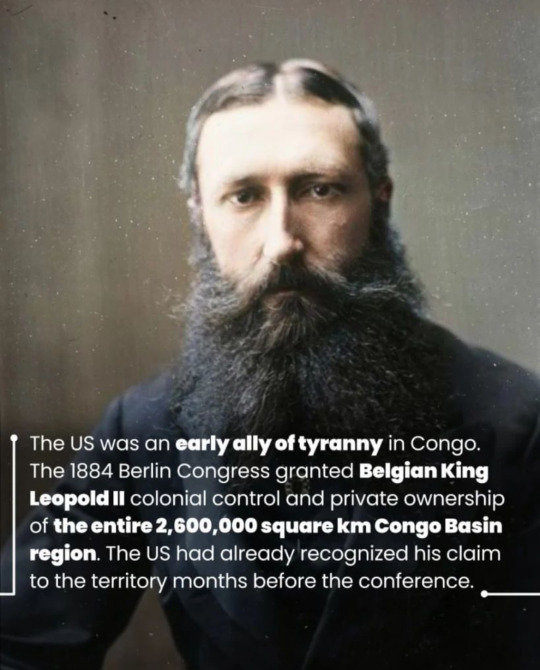
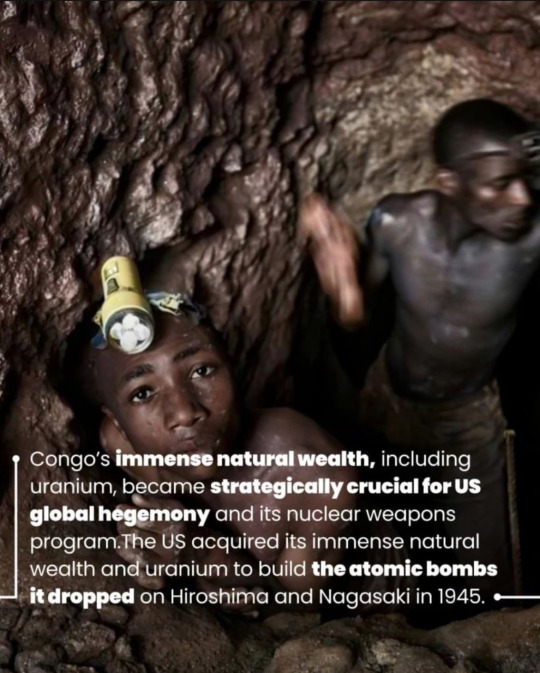


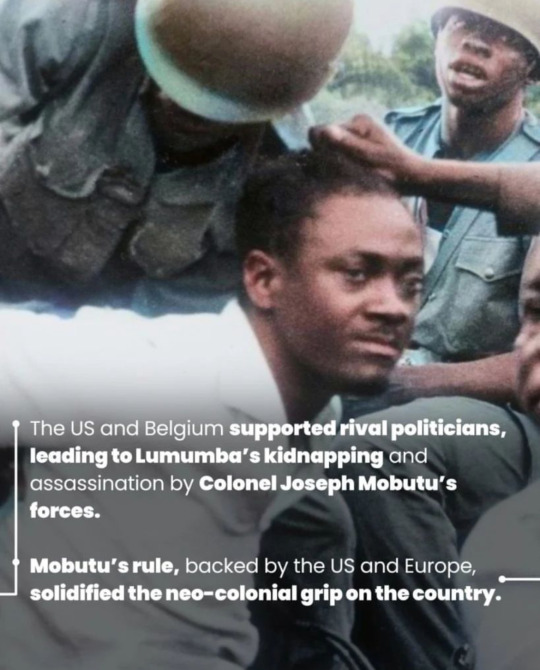

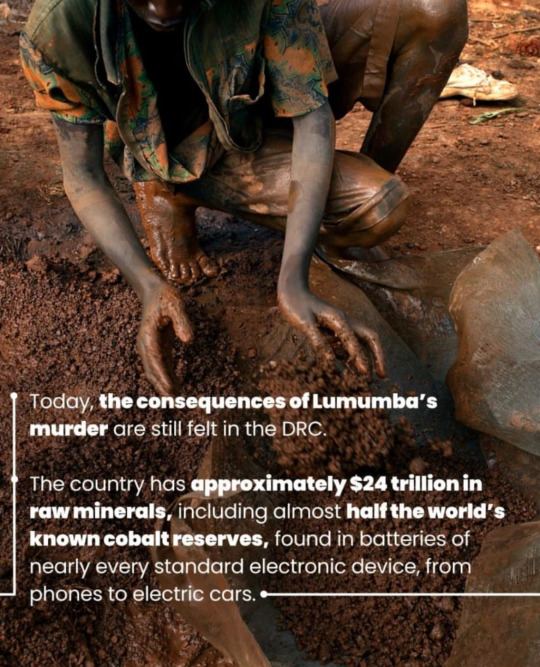

from red stream net
#resources#bipoc#drc#free congo#congo genocide#dr congo#congolese#cia#patrice lumumba#belgium#colonialism#assassination#wealth#minerals#genocide
2K notes
·
View notes
Text

884 notes
·
View notes
Link
CIA Agent Admits Deep State Plotting ‘False Flag’ Just in Time for the Election
A former CIA agent has warned that the Deep State are plotting a ‘false flag’ attack just before the November election.
#CIA#cia agent#ciaagent#deep state#deepstate#false flag#falseflag#electioninterference#election interference#2024 elections#2024election#seriousthreat#terror attack#terrorattack#WW3#WWIII
467 notes
·
View notes
Text
Why are they mining so much right now?
Cobalt has become the center of a major upsurge in mining in Congo, and the rapid acceleration of cobalt extraction in the region since 2013 has brought hundreds of thousands of people into intimate contact with a powerful melange of toxic metals. The frantic pace of cobalt extraction in Katanga bears close resemblance to another period of rapid exploitation of Congolese mineral resources: During the last few years of World War II, the U.S. government sourced the majority of the uranium necessary to develop the first atomic weapons from a single Congolese mine, named Shinkolobwe. The largely forgotten story of those miners, and the devastating health and ecological impacts uranium production had on Congo, looms over the country now as cobalt mining accelerates to feed the renewable energy boom—with little to no protections for workers involved in the trade.
The city of Kolwezi, which is 300 km (186 miles) northwest of Lubumbashi and 180 km from the now-abandoned Shinkolobwe mine, sits on top of nearly half of the available cobalt in the world. The scope of the contemporary scramble for that metal in Katanga has totally transformed the region. Enormous open-pit mines worked by tens of thousands of miners form vast craters in the landscape and are slowly erasing the city itself.
[...]Much of the cobalt in Congo is mined by hand: Workers scour the surface level seams with picks, shovels, and lengths of rebar, sometimes tunneling by hand 60 feet or more into the earth in pursuit of a vein of ore. This is referred to as artisanal mining, as opposed to the industrial mining carried out by large firms. The thousands of artisanal miners who work at the edges of the formal mines run by big industrial concerns make up 90 percent of the nation’s mining workforce and produce 30 percent of its metals. Artisanal mining is not as efficient as larger-scale industrial mining, but since the miners produce good-quality ore with zero investment in tools, infrastructure, or safety, the ore they sell to buyers is as cheap as it gets. Forced and child labor in the supply chain is not uncommon here, thanks in part to a significant lack of controls and regulations on artisanal mining from the government.

[...]When later atomic research found that uranium’s unstable nucleus could be used to make a powerful bomb, the U.S. Army’s Manhattan Project began searching for a reliable source of uranium. They found it through Union Minière, which sold the United States the first 1,000 tons it needed to get the bomb effort off the ground.
The Manhattan Project sent agents of the OSS, precursor to the CIA, to Congo from 1943 to 1945 to supervise the reopening of the mine and the extraction of Shinkolobwe’s ore—and to make sure none of it fell into the hands of the Axis powers. Every piece of rock that emerged from the mine for almost two decades was purchased by the Manhattan Project and its successors in the Atomic Energy Commission, until the mine was closed by the Belgian authorities on the eve of Congolese independence in 1960. After that, the colonial mining enterprise Union Minière became the national minerals conglomerate Gécamines, which retained much of the original structure and staff.
[...]Dr. Lubaba showed me the small battery-operated Geiger counters that he uses in the field to measure radioactivity. He had begun the process of trying to find and interview the descendants of the Shinkolobwe miners, but he explained that tracing the health consequences of working in that specific mine would be difficult: Many long-established villages in the area have been demolished and cast apart as cobalt extraction has torn through the landscape. His initial inquiries suggested that at least some of the descendants of the Shinkolobwe miners had been drawn into the maelstrom of digging in the region around Kolwezi.

In her book Being Nuclear: Africans and the Global Uranium Trade, historian Gabrielle Hecht recounts the U.S. Public Health Service’s efforts to investigate the effects of uranium exposure on people who worked closely with the metal and the ore that bore it. In 1956, a team of medical researchers from the PHS paid a visit to Shinkolobwe while the mine was still producing more than half of the uranium used in America’s Cold War missile programs. Most of their questions went unanswered, however, as Shinkolobwe’s operators had few official records to share and stopped responding to communications as soon as the researchers left.
[...]“Don’t ever use that word in anybody’s presence. Not ever!” Williams quotes OSS agent Wilbur Hogue snapping at a subordinate who had said the mine’s name in a café in Congo’s capital. “There’s something in that mine that both the United States and Germany want more than anything else in the world. I don’t know what it’s for. We’re not supposed to know.”
#things that keep me up at night#DRC#democratic republic of the congo#cobalt#usa#congo#CIA#oss#germany#nukes#plutonium#uranium#nuclear war#nuclear energy#nuclear weapons#cellphones#atomic bombs#congolese#u.s news#american politics#u.s politics#world politics#world history#capitalism#kamala harris#biden
382 notes
·
View notes
Text
The CIA has been accused of importing fentanyl into the USA?
Individuals, including former law enforcement officials, have made claims that the CIA has been involved in drug trafficking and illicit drug dealings. These accusations suggest that the CIA may have been complicit in facilitating the transportation and distribution of illegal drugs.
In 1996, during a C-SPAN interview with Director James Doich, the following projects were mentioned:
Project Amadous, Project Pegasus, Project Watchtower apparently all proving the CIA has been selling drugs in the united states...
Things to look up: 👇
Iran-Contra Affair: The Iran-Contra scandal in the 1980s involved allegations of CIA involvement in illegal arms sales to Iran and using the proceeds to fund Nicaraguan Contra rebels. Critics suggest that drug trafficking was a large part of these operations. 🤔
#pay attention#educate yourselves#educate yourself#knowledge is power#reeducate yourself#reeducate yourselves#think about it#think for yourselves#think for yourself#do your homework#do some research#do your own research#ask yourself questions#question everything#cia#government#corruption#drug cartels#news#government corruption
413 notes
·
View notes
Text
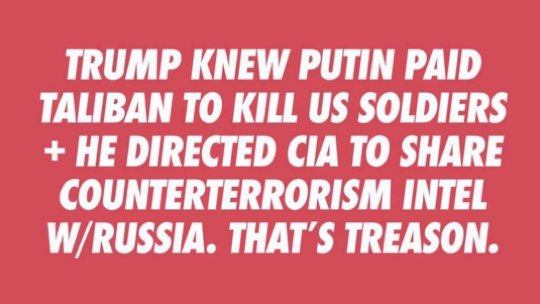
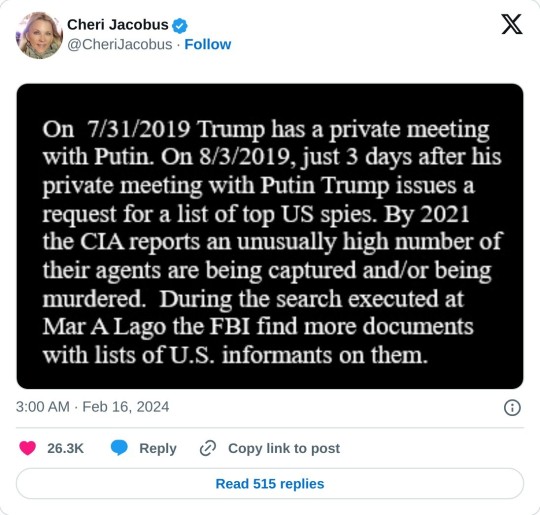
On 7/31/2019 Trump has a private meeting with Putin. On 8/3/2019, just 3 days after his private meeting with Putin Trump issues a request for a list of top US spies. By 2021 the CIA reports an unusually high number of their agents are being captured and/or being murdered. During the search executed at Mar A Lago the FBI find nore documents with lists of U.S. informants on them.
A Timeline
• FBI wiretapped Russian gambling ring headquartered at Trump Tower for two years - March 21, 2017
• Trump revealed highly classified information to Russian foreign minister and ambassador - May 15, 2017
• Trump, Putin Meet For 2 Hours In Helsinki - July 16, 2018
• Rand Paul Goes To Russia And Delivers Letter For Trump, Marking Our Era Of Irony - August 9, 2018
• Following the Money: Trump and Russia-Linked Transactions From the Campaign to the Presidential Inauguration - December 17, 2018
• The US extracted a top spy from Russia after Trump revealed classified information to the Russians in an Oval Office meeting - September 10, 2019
• Trump’s Loose Lips Force US to Extract Spy From Kremlin - September 10, 2019
• Was Mar-a-Lago Trespasser a Tourist or a Spy? A Judge Said Her Story Didn’t Hold Up. - November 25, 2019
• Trump downplays massive cyber hack on government after Pompeo links attack to Russia - December 19, 2020
• Russia has been cultivating Trump as an asset for 40 years, former KGB spy says - January 29, 2021
• There was Trump-Russia collusion — and Trump pardoned the colluder - April 17, 2021
• Longtime GOP operatives charged with funneling Russian national’s money to Trump, RNC - September 20, 2021
• Captured, Killed or Compromised: C.I.A. Admits to Losing Dozens of Informants - October 5, 2021
• Files Seized From Trump Are Part of Espionage Act Inquiry - August 12, 2022
• Ex-Clinton aide implies 'President of France' file found at Trump's home during Mar-a-Lago raid could be valuable to Putin as 'kompromat' - August 13, 2022
• Inventing Anna: The tale of a fake heiress, Mar-a-Lago, and an FBI investigation - August 22, 2022
• Russians used a US firm to funnel funds to GOP in 2018. Dems say the FEC let them get away with it - October 30, 2022
• Trump makes shocking comments about trusting Putin over US 'intelligence lowlifes' - January 31, 2023
• Russia's Prigozhin admits links to what US says was election meddling troll farm - February 14, 2023
• GOP operative sentenced to 18 months for funneling Russian money to Trump- February 17, 2023
• Trump allegedly discussed US nuclear subs with foreign national after leaving White House: Sources - October 5, 2023
• 'So appalled': What witnesses told special counsel about Trump's handling of classified info while still president - April 24, 2024
🤔🤔🤔
#us politics#news#republicans#conservatives#donald trump#gop#trump administration#classified documents#cheri jacobus#2024#twitter#tweet#russia#vladimir putin#spies#foreign intelligence#espionage act#cia
574 notes
·
View notes
Text
🔥🔥🔥
#whistleblower#disturbing#cia#fbi#corruption#Covid#disinformation#dirty politics#crimes against humanity#these people are evil#speaktruth#fight for justice#standup#speak up#truth#please share#wwg1wga
1K notes
·
View notes
Text
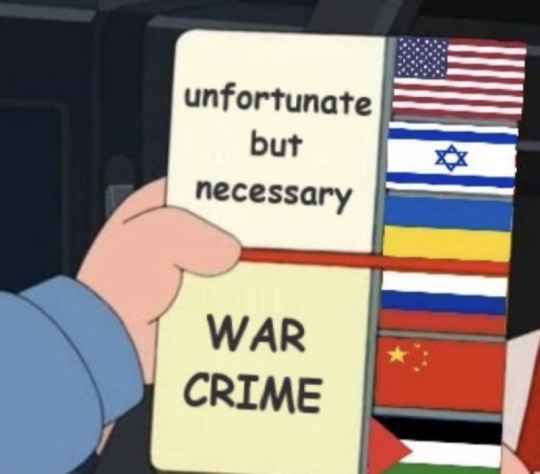
#American Jews#AIPAC#GOP#CIA#Mossad#free Palestine#Hamas#Houthis#Hezbollah#China#Russia#ExpelUSfromUN#invokearticle6
543 notes
·
View notes
Text
No, the Popularity of Abstract Art is Not the Result of a CIA PsyOp
If you are unlucky enough to move around the internet these days and talk about art, you’ll find that many “First commenters” will hit you with what they see as some hard truth about your taste in art. Comments usually start with how modern art is “money laundering” always comically misunderstanding what that means. What they are saying is that, of course, rich people use investments as tax shelters and things like expensive antiques and art appraised at high prices to increase their net worth. Oh my god, I’ve been red-pilled. The rich getting richer? I have never heard of such a thing.
What is conveniently left out of this type of comment is that the same valuation and financial shenanigans occur with baseball cards, wine, vacation homes, guitars, and dozens of other things. It does indeed happen with art, but even the kind that the most conservative internet curator can appreciate. After all, Rembrandts are worth money too, you just don’t see many because he’s not making any more of them. The only appropriate response to these people who are, almost inevitably themselves, the worst artists you have ever seen, is silence. It would cruel to ask about their own art because there’s a danger they might actually enjoy such a truly novel experience.
When you are done shaking your head that you just subjected yourself to an argument about the venality of poor artists plotting to make their work valuable after they died, you can certainly then enjoy the accompanying felicity of the revelation they have saved to knock you off your feet: “Abstract art is a CIA PsyOp”
Here one must get ready either to type a lot or to simply say “Except factually” and go along your merry, abstract-art-loving way. But what are the facts? Unsurprisingly with things involving US government covert operations, the facts are not so clear.
Like everything on the internet, you are unlikely to find factual roots to the arguments about government conspiracies and modern art. The mere idea of it is enough to bring blossom for the “I’m not a sheep” crowd, some of whom believe that a gold toilet owning former president is a morally good, honest hard-working man of the people.
The roots of this contention come from a 1973 article in Artforum magazine, where art critic Max Kozloff wrote about post-war American painting in the context of the Cold War, centering around Irving Sandler’s book, The Triumph of American Painting (1970). Kozloff takes on more than just abstract expressionism in his article but condemns the “Self-congratulatory mood”of Sandler’s book and goes on to suggest the rise of abstract expressionism was a “Benevolent form of propaganda”. Kozoloff treads a difficult line here, asserting that abstraction was genuinely important to American art but that its luminaries, “have acquired their present blue-chip status partly through elements in their work that affirm our most recognizable norms and mores.”
While there were rumblings of agreements around Kozloff’s article of broad concerns, it did not give birth to an actual conspiracy theory at the time. The real public apprehension of this idea seems to mostly come from articles written by historian Frances Stonor Saunders in support of her book, “The Cultural Cold War: The CIA and the World of Arts and Letters” (New York, New Press, 2000). (I have not read this 525 page book, only excerpts).
The gist of Ms. Saunders argument is a tantalizing, but mostly unsupported, labyrinthine maze of back door funding and novelistic cloak and dagger deals. According to Saunders, the Congress for Cultural Freedom (CCF), an anti-communist cultural organization founded in 1950, was behind the promotion of Abstract art as part of their effort to be opinion makers in the war against communism. In 1966 it was revealed that the CCF was funded by the CIA. Saunders says that the CCF financed a litany of art exhibitions including “The New American Painting” which toured Europe in the late 1950s. Some of this is true, but it’s difficult, if not impossible, to know the specifics.
Noted expert in abstract-expressionism, David Anfam said CIA presence was real. It was “a well-documented fact” that the CIA co-opted Abstract Expressionism in their propaganda war against Russia. “Even The New American Painting [exhibition] had some CIA funding behind it,” he says. But the reasons for this are not quite what the abstract art detractors might be looking for. After all, the CCF also funded the travel expenses for the Boston Symphony Orchestra and promoted Fodor’s travel guides. More than trying to pull the wool over anyone’s eyes, it was meant to showcase the freedom artists in the US. enjoyed. Or as Anfam goes on to say, “It’s a very shrewd and cynical strategy, because it showed that you could do whatever you liked in America.”
For what it’s worth, Saunders’s book was eviscerated in the Summer 2000 issue of Art Forum at the time of its publication. Robert Simon wrote:
“Saunders draws extensively on primary and secondary sources, focusing on the convoluted money trail as it twists through dummy corporations, front men, anonymous donors, and phony fund-raising events aimed at filling the CCF’s coffers. She makes lengthy forays into such topics as McCarthyism, the formation and operation of the CIA, the propaganda work of the Hollywood film industry, and New York cultural politics—from Partisan Review to MoMA to Abstract Expressionism. Yet what seems strangely absent from Saunders’s panoramic history, as if it were a minor detail or something too obvious to require discussion, is the cultural object itself: The complex specifics of the texts, exhibitions, intellectual gatherings, paintings, and performances of the culture war are largely left out of the story.”
Another problem with the book seems to be that Saunders is an historian but not an art historian. For me, I sensed an overtone of superiority in the tale she’s spinning and most assuredly from those that repeat its conclusion. The thinly veiled message of some is that if it were “Real art” it would not have had be part of this government subterfuge. The reality is very different. For one thing, most of us know it is simply not true that you can make people devoted to a type of art for 100 years that they would sensibly hate otherwise. Another issue is that it’s quite obvious none of the artists actually knew about any government interference if there was any. Pollock, Rothko, Gottlieb and Newmann were all either communists or anarchists. Hardly the group one would recruit the help the US government free the world of communism. Additionally, this narrow cold war timeline ignores a huge amount of abstract art that Jackson Pollock haters also revile and consider part of the same hijacking of high (Frankly, Greek, Roman, or Renaissance) culture. If you look at the highly abstract signature work of Piet Mondrian and observe the dates they were painted, you’ll see 1908, 1914, 1916. This is some of the art denigrated as a CIA PsyOP, 35 years before the CIA even thought about it. Modern art didn’t come from nowhere as many would have you believe to discredit its rise. There was Surrealism, Dada, Bauhaus, Russian futurism and a host of other movements that fueled it.
Generally, people like to argue. On the internet, “I don’t like this” is a weak statement that always must be replaced by “This is garbage” or my favorite, “This is fake.”
It’s hardly surprising that the more conservative factions of our society look for any government involvement in our lives to explain why things are not exactly as they wish them to be, given the (highly ironic) conservative government-blaming that blew up after Reagan. In addition, modern fascists have always had a love affair with the classical fantasy of Greece and Rome. Both Mussolini and Hitler used Greece and Rome as “Distant models” to address their uncertain national identity. The Nazis confiscated more than 5,000 works in German museums, presenting 650 of them in the Entartete Kunst (Degenerate Art, 1937) show to demonstrate the perverted nature of modern art. It featured artists including Marc Chagall, Max Ernst, Wassily Kandinsky, and Paul Klee, among others. The fear of art was real. It was the fear of ideas.
To a lot of people on the internet just the mentioning a “CIA program” is enough to get the cogs turning, but as with many things, the reality of CIA programs and government plots is often less than evidence of well planned coup.
The CIA reportedly spent 20 millions dollars on Operation Acoustic Kitty which intended to use cats to spy on the Kremlin and Soviet embassies. Microphones were planted on cats and plans were set in motion to get the cats to surreptitiously record important conversations. However, the CIA soon discovered that they were cats and not agreeable to any kind of regulation of their behavior.
As part of Operation Mongoose the CIA planned to undermine Castro's public image by putting thallium salts in his shoes, which would cause his beard to fall out, while he was on a trip outside Cuba. He was expected to leave his shoes outside his hotel room to be polished, at which point the salts would be administered. The plan was abandoned because Castro canceled the trip.
Regardless of your feelings on this subject or how much you believe abstract art benefited from government dollars, Saunders herself quotes in her book a CIA officer apparently involved in these “Long leash” influence operations. He says, “We wanted to unite all the people who were writers, who were musicians, who were artists, to demonstrate that the West and the United States was devoted to freedom of expression and to intellectual achievement, without any rigid barriers as to what you must write, and what you must say, and what you must do.” Hardly the Illuminati plot we were promised.
In 2016, Irving Sandler, author of the book that started Kozloff tirading in 1973, told Alastair Sooke of The Daily Telegraph, “There was absolutely no involvement of any government agency. I haven’t seen a single fact that indicates there was this kind of collusion. Surely, by now, something – anything – would have emerged. And isn’t it interesting that the federal government at the time considered Abstract Expressionism a Communist plot to undermine American society?”
This blog post contains information and quotes sourced from
The Piper Played to Us All: Orchestrating the Cultural Cold War in the USA, Europe, and Latin America, Russell H. Bartley International Journal of Politics, Culture, and Society, Vol. 14, No. 3 (Spring, 2001), pp. 571-619 (49 pages)
https://www.bbc.com/culture/article/20161004-was-modern-art-a-weapon-of-the-cia
https://brill.com/view/journals/fasc/8/2/article-p127_127.xml?language=en
https://www.guggenheim-bilbao.eus/en/learn/schools/teachers-guides/the-dark-side-of-classicism
https://www.artforum.com/features/american-painting-during-the-cold-war-212902/
https://www.independent.co.uk/news/world/modern-art-was-cia-weapon-1578808.html
https://www.artforum.com/columns/frances-stonor-saunders-162391/
https://www.artforum.com/features/abstract-expressionism-weapon-of-the-cold-war-214234/
Mark Rothko and the Development of American Modernism 1938-1948
Jonathan Harris, Oxford Art Journal, Vol. 11, No. 1 (1988), pp. 40-50 (11 pages)
#mark rothko#markrothko#rothko#daily rothko#dailyrothko#abstract expressionism#modern art#abstraction#colorfield#ab ex#colorfield painting#mid century#CIA#pysop
389 notes
·
View notes
Text

James Gunn would have this as a fun side plot, tho.
3K notes
·
View notes
Text
Pentagon ran secret anti-vax campaign to incite fear of China vaccines (reuters.com)
"The U.S. military launched a clandestine program amid the COVID crisis to discredit China’s Sinovac inoculation – payback for Beijing’s efforts to blame Washington for the pandemic. One target: the Filipino public. Health experts say the gambit was indefensible and put innocent lives at risk."
The program started under the Trump administration and was shut down by the Biden administration.
320 notes
·
View notes
Text

July 13 was an inside job.
#trump 2024#joe biden#nwo#wef#assassination#assassination attempt#thomas crooks#fbi#gestapo#cia#political memes
392 notes
·
View notes
Text

On this day 60 years ago JFK was assassinated. Why does it matter?
Read More: https://thefreethoughtproject.com/deep-state/revisiting-camelot-jfk-60-years-on
#JFK #JFKAssassination #TheFreeThoughtProject #TFTP
990 notes
·
View notes
Text
The reasons Mr. Hussein failed to clarify that he had no weapons of mass destruction in the run-up to 2003 are embedded in his tragic, decades-long conflict with Washington: his furtive, mistrustful collaboration with the C.I.A. during the 1980s; the Gulf War of 1990 and 1991; the U.N.-backed struggle over Iraqi disarmament that followed; and the climactic confrontation after Sept. 11.
Shortly after the Gulf War, he secretly ordered the destruction of his chemical and biological arms, as Washington and the United Nations had demanded. He hoped this action would allow Iraq to pass disarmament inspections, but he covered up what he had done and lied repeatedly to inspectors. He did not tell the truth to his own generals, fearing that he might invite internal or external attacks. His decision to comply with international demands but to lie about it to U.N. inspectors defied Western logic. But Mr. Hussein would not submit to public humiliation, not least because he thought it wouldn’t work. “One of the mistakes some people make is that when the enemy has decided to hurt you, you believe there is a chance to decrease the harm by acting in a certain way,” he told a colleague. In fact, he said, “The harm won’t be less.”
Mr. Hussein believed the C.I.A. was all but omniscient, and so, particularly after Sept. 11, when Mr. Bush accused him of hiding weapons of mass destruction, he assumed that the agency already knew that he had no dangerous weapons and that the accusations were just a pretense to invade.
A C.I.A. capable of making an analytical mistake on the scale of its miss about Iraq’s weapons of mass destruction was not part of his worldview.
--Steve Coll, "Why Authoritarians Like Saddam Hussein Confound U.S. Presidents," New York Times, Feb. 28, 2024.
454 notes
·
View notes


